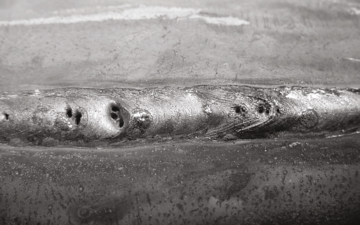Just how to Recognize What is Porosity in Welding and Improve Your Method
Just how to Recognize What is Porosity in Welding and Improve Your Method
Blog Article
Understanding Porosity in Welding: Discovering Causes, Results, and Avoidance Methods
Porosity in welding is a relentless obstacle that can dramatically impact the high quality and stability of welds. As specialists in the welding industry are well conscious, recognizing the causes, effects, and avoidance methods associated with porosity is essential for achieving robust and reputable welds. By delving into the origin creates of porosity, examining its damaging results on weld high quality, and checking out efficient avoidance techniques, welders can enhance their expertise and skills to create top notch welds consistently. The elaborate interaction of variables adding to porosity requires a thorough understanding and a proactive technique to ensure effective welding end results.
Common Root Causes Of Porosity
Contamination, in the kind of dirt, grease, or rust on the welding surface area, creates gas pockets when heated up, leading to porosity in the weld. Inappropriate securing takes place when the shielding gas, typically utilized in procedures like MIG and TIG welding, is unable to fully protect the liquified weld swimming pool from reacting with the bordering air, resulting in gas entrapment and subsequent porosity. In addition, poor gas insurance coverage, frequently due to inaccurate circulation rates or nozzle positioning, can leave components of the weld unprotected, permitting porosity to form.
Results on Weld Quality
The presence of porosity in a weld can dramatically compromise the total top quality and integrity of the bonded joint. Porosity within a weld produces voids or dental caries that damage the structure, making it much more susceptible to cracking, rust, and mechanical failure.
In addition, porosity can prevent the performance of non-destructive testing (NDT) methods, making it testing to find various other defects or suspensions within the weld. This can bring about substantial security worries, specifically in important applications where the architectural honesty of the welded parts is extremely important.

Prevention Techniques Overview
Provided the destructive impact of porosity on weld quality, reliable avoidance strategies are critical to keeping the architectural stability of bonded joints. Furthermore, selecting the suitable welding specifications, such as voltage, current, and take a trip speed, can help minimize the threat of porosity formation. By including these prevention methods right into welding methods, the incident of porosity can be significantly decreased, leading to stronger find and much more trustworthy welded joints.
Relevance of Appropriate Protecting
Appropriate shielding in welding plays a critical role in avoiding climatic contamination and making certain the honesty of bonded joints. Protecting gases, such as argon, helium, or a mix of both, are generally utilized to protect the weld pool from reacting with components airborne like oxygen and nitrogen. When these reactive aspects come right into contact with the hot weld swimming pool, they can create porosity, causing weak welds with reduced mechanical buildings.

Poor shielding can lead read this to different flaws like porosity, spatter, and oxidation, jeopardizing the architectural honesty of the bonded joint. Adhering to correct securing practices is necessary to generate premium welds with minimal flaws and make sure the longevity and dependability of the welded components.
Monitoring and Control Techniques
Just how can welders effectively keep track of and regulate the welding process to ensure ideal results and stop problems like porosity? One trick approach is via the use of sophisticated monitoring technologies. These can include real-time monitoring systems that give comments on criteria such as voltage, present, take a trip rate, and gas flow prices. By constantly checking these variables, welders can identify variances from the ideal problems and make prompt modifications to avoid porosity development.

Furthermore, implementing correct training programs for welders is necessary for checking and managing the welding procedure properly. What is Porosity. Educating welders on the value of maintaining regular specifications, such as proper gas shielding and travel speed, can help stop porosity issues. Normal analyses and accreditations can likewise ensure that welders excel in monitoring and regulating welding procedures
Moreover, the use of automated welding systems can enhance monitoring and control capabilities. These systems can exactly regulate welding parameters, reducing the probability of human mistake and ensuring regular weld quality. By combining advanced monitoring innovations, training programs, and automated systems, welders can effectively check and regulate the welding process to decrease porosity flaws and attain top notch welds.
Verdict

Report this page